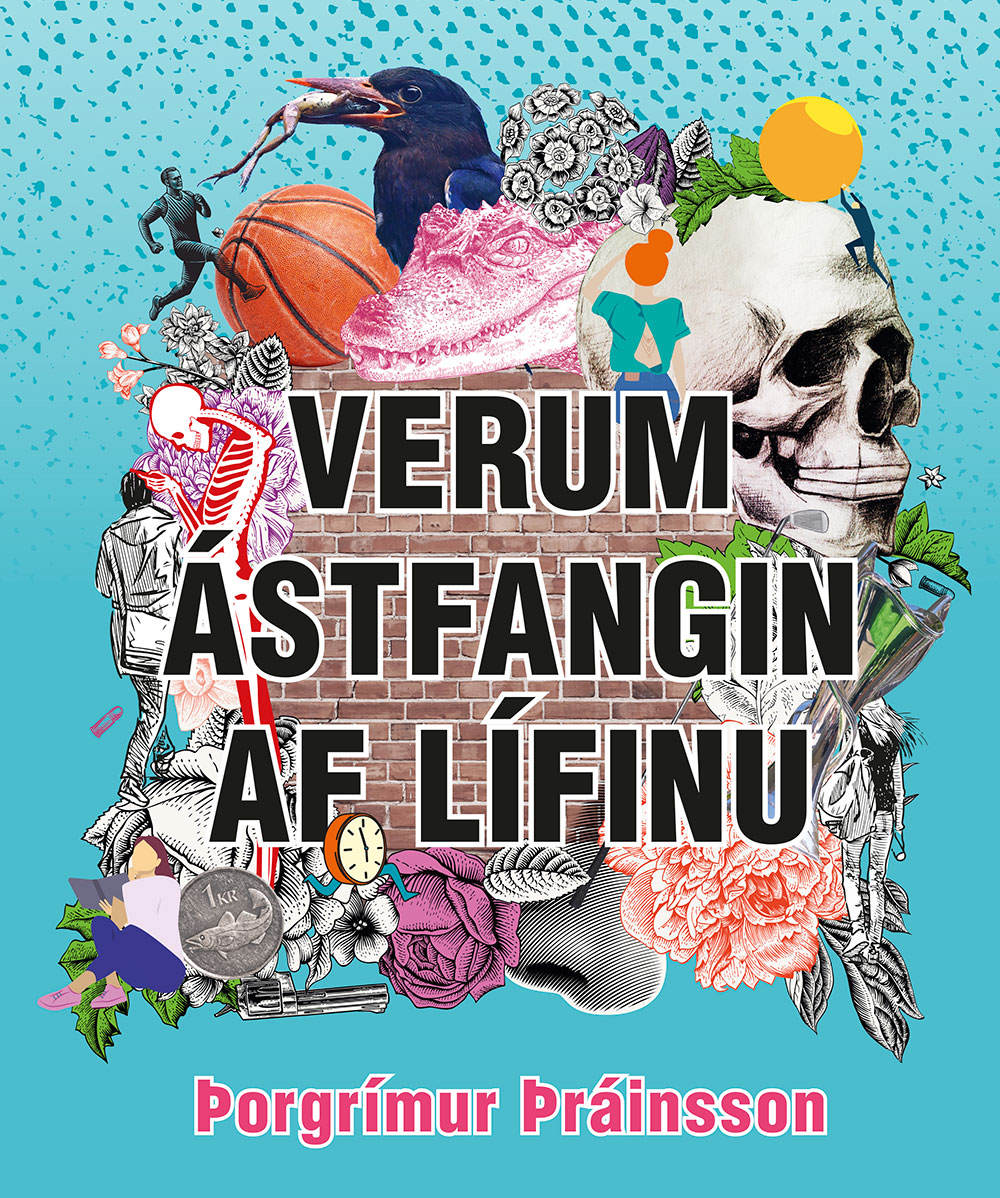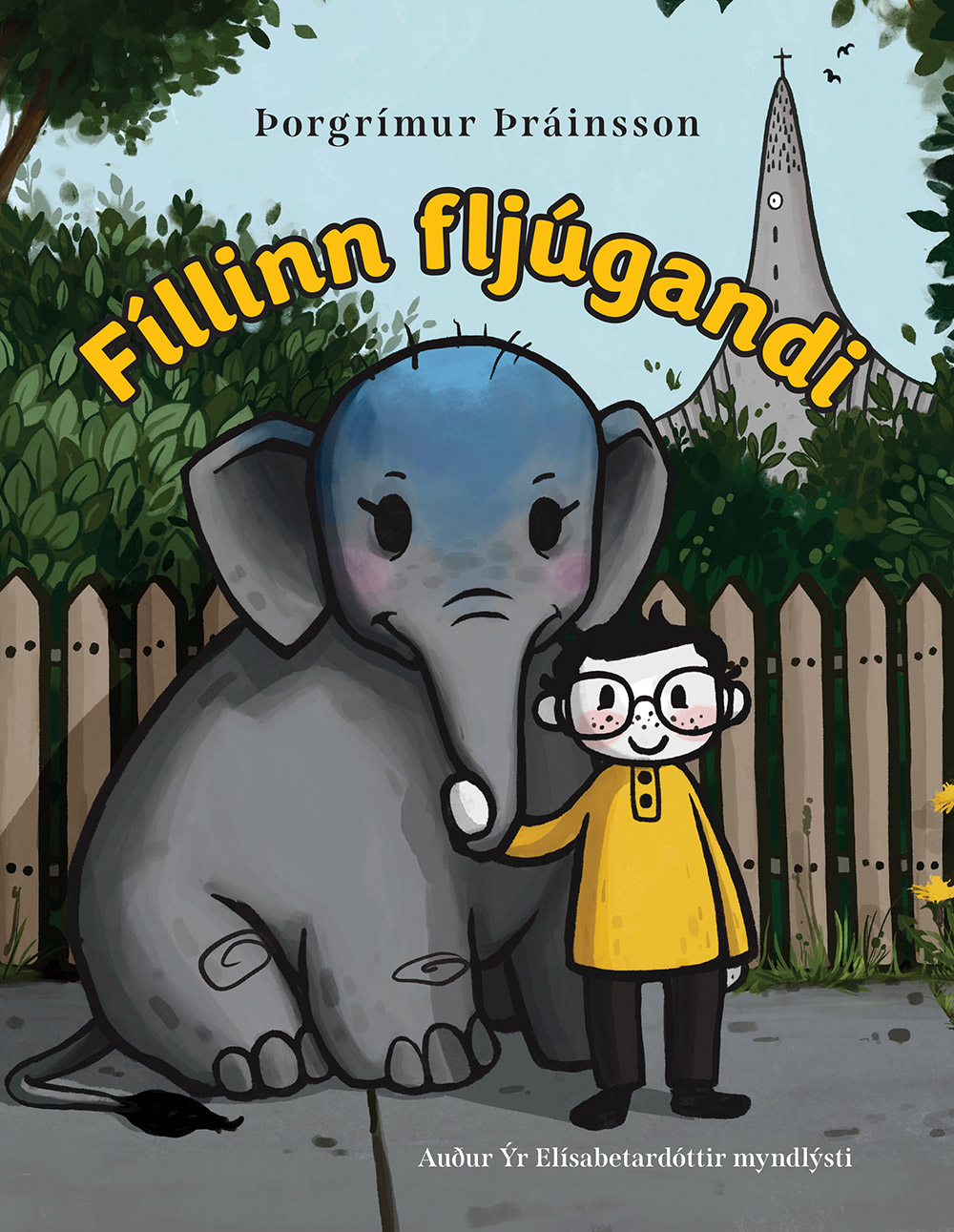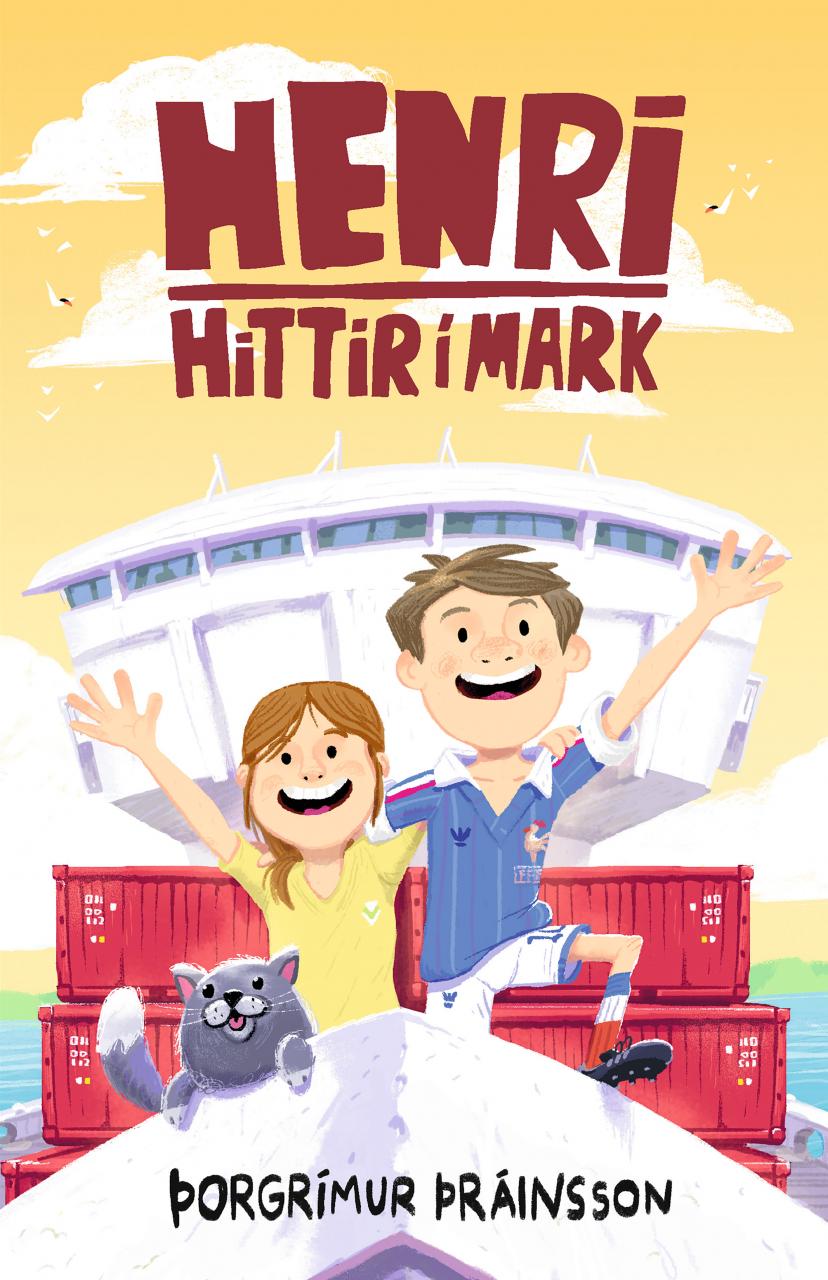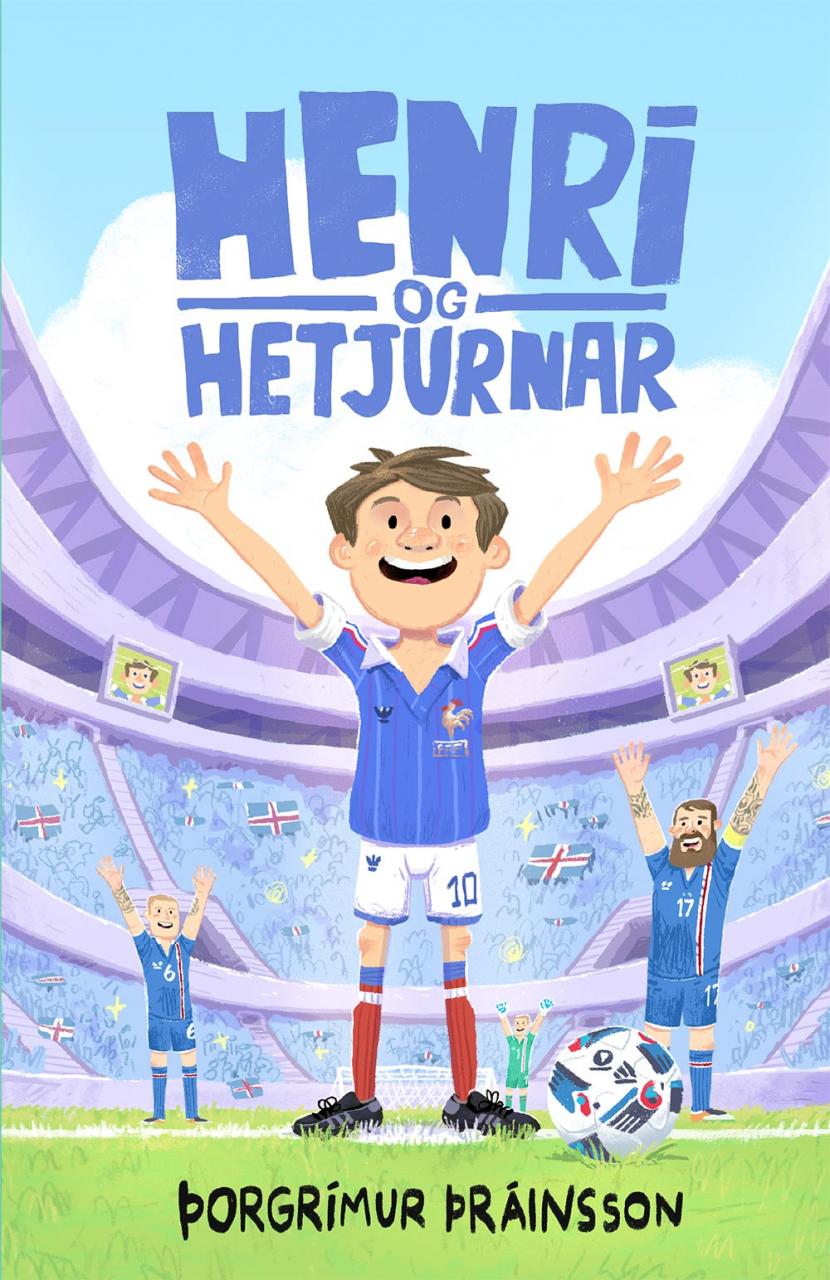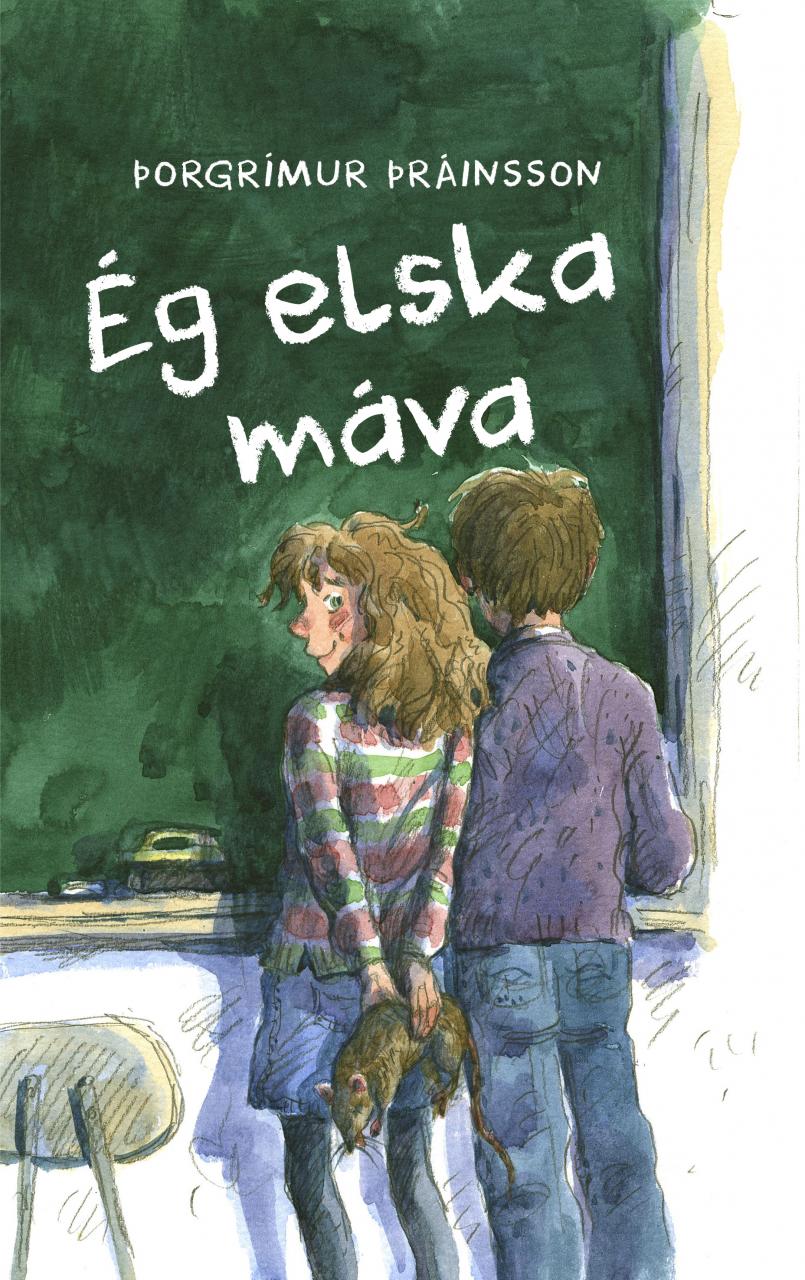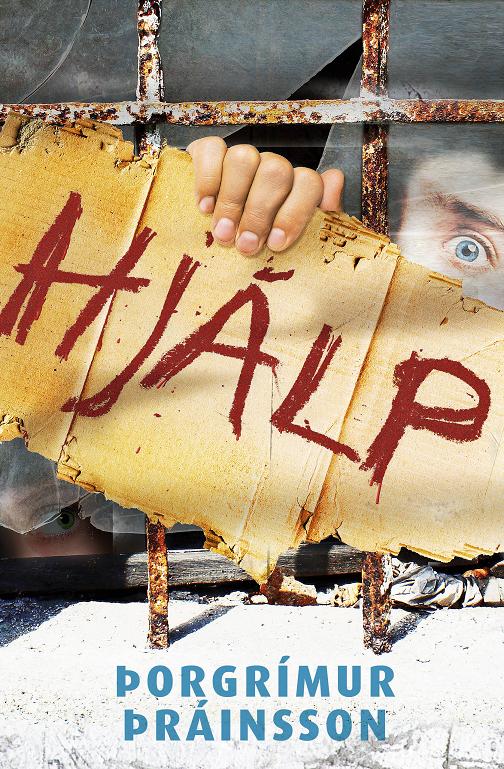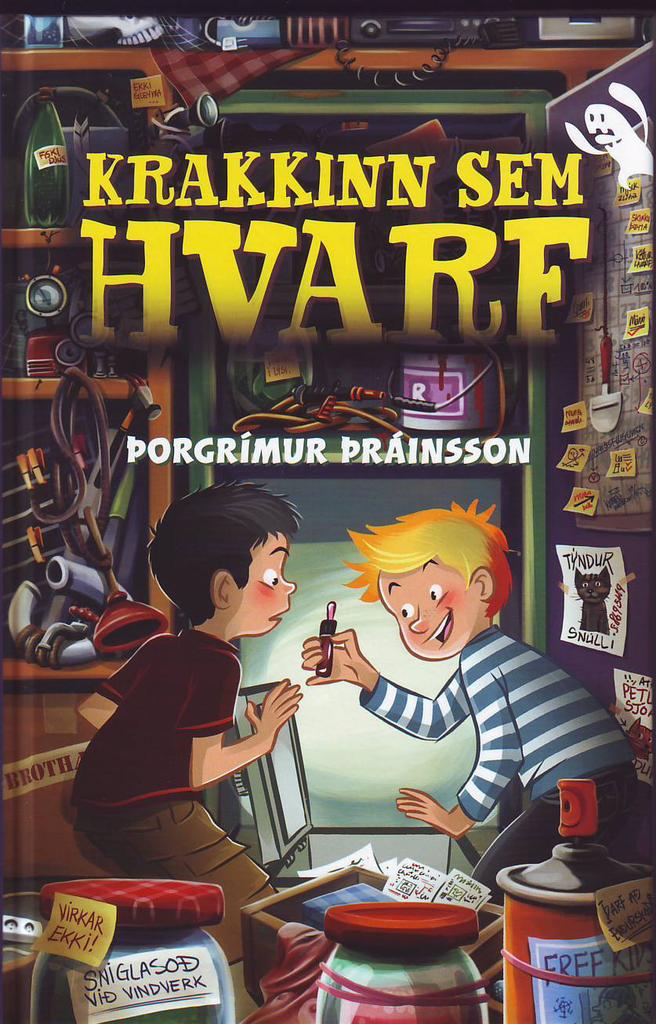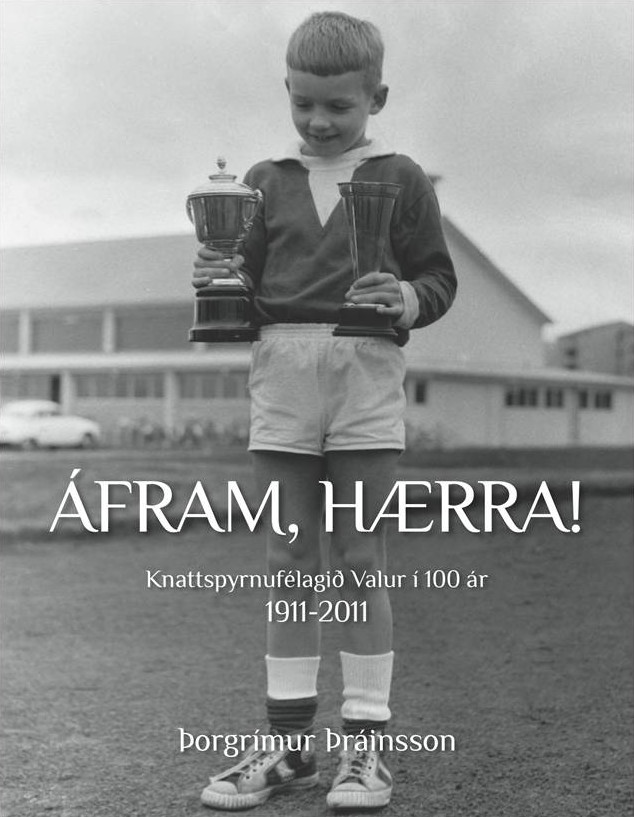Bio
Þorgrímur Þráinsson was born in Reykjavík, January 8, 1959. He graduated from highschool in 1980 and studied French at Sorbonne in Paris 1983-1984. He worked as a journalist for the publishing house Fróði for a number of years, and was the editor of the Sportsmagazine and a assistant editor of the children’s magazine, ABC. In 1996 Þorgrímur became the manager of Tobacco Control Task Force of Iceland. Þorgrímur played soccer with the Reykjavík soccer club Valur in the Icelandic premier league from 1979 to 1990 and was a captain for the last five seasons. Before he had played with the team Víkingur from the town Ólafsvík. During his soccer-carrier his team won the Icelandic championship three times, and the Icelandic cup two times. Þorgrímur played alltogether around 180 games in the premier league and 17 national games for Iceland. In addition he won the Icelandic cup in athletics with FH (Hafnafjörður Gymnastic Club), for javelin throw.
Þorgrímur has written a number of popular books for children and young adults and his first book, Með fiðring í tánum (Fidgety Toes) from 1989, was a bestseller in its time. Þorgrímur received The Icelandic Children’s Book Prize in 1997 for his book Margt býr í myrkrinu (Secrets of the Dark) and again in 2010 for Ertu Guð, afi? (Are you God, Grampa?). His first novel for adults, Allt hold er hey, was published in 2004. Þorgrímur was selected the City Artist of Reykjavík in 2013 and in 2016 he received the Children's Welfare Award, Save the Children, for his contribution to the welfare of children.
About the Author
On the works of Þorgrímur Þráinsson
Þorgrímur Þráinsson is currently a popular writer of teenage novels and has been so for the past decade. Despite being best known for his books for teenagers, he has also written for other audiences, including a biography of bishop Jón Vídalín, textbooks and picture books for younger children. However, as the great majority of his writings are for young adults, only these will be discussed here.
Most of Þorgrímur’s novels are about teenage boys, between twelve and sixteen years of age, who are almost always very keen on football or sports players. Sometimes the books focus on one boy, but they usually also feature at least one or two friends of the main character and often a girl or girls the main character has a crush on. In the background are also his class and team mates and his family.
Þorgrímur’s books touch on common teenage problems, such as love, and being or feeling different from one’s peers. The characters’ love of football and descriptions thereof serve as a counterbalance to the problems. Football is yet in some ways also connected to the problem of trying to fit in and prove oneself, but the descriptions of the football games the main characters participate in tend to be a bit longwinded. In the true spirit of Icelandic realist children’s literature, the books also deal with the more serious problems which can occur in the lives of adolescents, problems which usually have to do with the family or best friends of the main character, and can range from alcoholism to illness and death. These problems, their causes and background are not tackled in depth, but are handled with realism and seriousness.
Some of Þorgrímur’s books differ in some way from the young adult formula he seems otherwise to adhere to. One might for instance mention Sex augnablik (Six Moments,1995) which is an unusual book, as it is the autobiography of a teenage boy. It is partly written in a third person narrative in which we follow the main character, a lively and fun 16 year old boy, and partly in a first person narrative in which the boy, Eiríkur, describes selected moments from his life. Eiríkur is in fact writing his autobiography in the book and we are allowed to read chapters from it. The storyline is fairly conventional. Eiríkur has to deal with teenage love and betrayal, but as he is a funny and lively character and the form fresh, the book has a certain uniqueness among Þorgrímur’s work.
Amó Amas (Amo Amas, 1994) also distinguishes itself from Þorgrímur’s other books, but this time it is the subject matter rather than the form which makes it different. The book tells the story of the cousins Ómar and María, who when the story begins are staying on their grandparents’ farm. There they meet the alien Amó Amas, who has come to earth in order to develop his soul and reach a higher level of existence on his home planet. The kids and Amó become good friends and they invite him to come and stay with them when they have to go back to the city at the end of the summer. He goes to school with them, where he finally manages to complete his task. However this task costs him his life here on earth, the harshness of which is finally tempered by the notion that death is not the end of everything and that Amó has reached the next level of existence.
In Lalli ljósastaur (Lalli the Lamp Post, 1992) the main characters encounter another kind of supernatural being when they have to fight against elves. In the beginning, Lalli is an ordinary but rather arrogant boy who takes a toy from an elfin boy without realising it and without feeling sorry. The elf takes revenge on Lalli by lengthening him by many meters overnight. The book has a very clear pedagogical message which is conveyed both in how Lalli and his friends make peace with a lady in town who they think is a witch and responsible for Lalli’s lengthening, and how Lalli finally returns the toy to the elf boy and asks his forgiveness for his behaviour. The text contains another message for the reader, namely that you should accept yourself as you are. In the beginning Lalli is not very good at basketball, the favourite sport of the kids in town, but he becomes an obvious goal scorer when he has been lengthened. Despite suddenly becoming very popular and a clever basketball player, Lalli wants to change back again, because he realises that it is better to be oneself and that popularity is not everything.
Þorgrímur’s third book which may be said to have an unusual main character, is Hlæjandi refur (Laughing Fox, 2000). It is subtitled Sagan um Úlfhildi og indíánastrákinn sem flúði til Íslands (The Story of Úlfhildur and the Indian Boy who Fled to Iceland), which is a very concise description of the storyline. Úlfhildur is an Icelandic girl who meets the Indian boy Laughing Fox and they form a strong friendship during his short stay in Iceland. Laughing Fox enters the country as a stowaway on a ship, on the run from his mother’s ex-boyfriend who wants to adopt him. His mother has passed away and his father lives on a reservation. Laughing Fox’s goal is to find his father, who he grew up with, and to go and live with him.
This unusual boy’s attitude to life is very different from what Úlfhildur has known before, and he is very different from Icelandic kids who have been raised in the city. Laughing Fox is a child of nature and has a very close relationship to his environment. He teaches the Icelandic children in the book to see the world in a different way than before and to have respect for themselves and for nature. But Laughing Fox can not stay in Iceland for very long, as he must continue his flight from his mother’s boyfriend and his search for freedom and for his father.
The Icelandic countryside and kids’ summer stays in the country are a common motif in Þorgrímur’s books; he has many of his characters stay in the country with relatives. The kids go there to help their grandparents or to get to know their relatives, and always return healthier and stronger and with a more wholesome view of life than the city could give them. The countryside features as a setting in the “football stories,” with main characters who are keen football players and aspire to winning a place on the top teams of various football leagues, but stay in the country with relatives over the summer. The country also features in other books, such as Amó Amas and Margt býr í myrkrinu (Secrets of the Dark) from 1997, which won the Icelandic Children’s Literature Prize that year.
Margt býr í myrkrinu is a suspenseful and entertaining book about Gabríel, a teenage boy who visits his grandfather in the country between Christmas and New Year. Gabríel is supposed to assist his grandfather when he has to take care of the farm alone for a couple of days. It turns out that things are not as they should be on grandpa’s farm and Gabríel starts to experience some very odd happenings. The book holds the reader in suspense right up to the last page, partly because Gabríel is no hero, rather afraid of the dark, and is therefore easy to sympathise with.
The events on the farm get stranger and stranger and finally Gabríel’s grandfather vanishes. Gabríel calls for help from the city by summoning his best friend, Andrea. Andrea reaches him with difficulty, as a terrible storm rages, causing an electricity outage which cuts them off from the rest of the world. Gabríel and Andrea manage, in a thrilling and frightening way, to solve the mystery of the vanished grandfather and fight a “ghost”, while keeping all the animals alive. Right up to the end of the book it is suggested that the events which took place in the story really were of a supernatural nature and the blame is laid on Axlar-Björn, one of Iceland’s most notorious murderers. But in the final pages a more realistic and credible explanation is put forward, although not all the strange events which happened have been explained. The reader is therefore left in doubt, which further heightens the thrill of the book.
The suspense and the plot in Margt býr í myrkrinu equals what one can expect in an exciting crime mystery and the book succeeds on every level. Unfortunately the same is not true for its sequel, Nóttin lifnar við (The Night Comes Alive,1998) although it seems promising enough in the beginning. The suspense builds in the same way as in the other book, but somehow it is as if the author blunders or becomes bored with the plot and the book takes a sharp and unexpected turn onto a very different path. The suspense which had been built up is lost, unexplained events are never solved and the reader is left bewildered and rather disappointed.
The third book which deals with supernatural events is Spor í myrkri (Steps in the Dark, 1993) and although it is Þorgrímur’s first thriller, it falls somewhere between the other two. It is not as thrilling and eerie as Margt býr í myrkrinu but still easily manages to hold the reader’s attention. This book differs from the others in the sense that it is more of a young adults’ book, touching on social problems, love and rebellion in equal measure to the ghost story elements.
Spor í myrkri is a story about a group of kids working together on a summer job, who decide to spend the bank holiday weekend in a summer cabin together. One of the girls, Sóla, is psychic and has a strange effect on the other kids. She behaves differently and is more mature than most kids her age. In the course of the weekend the kids all acquire a new understanding of life, and form a strong bond with one another. The main character of the book is a boy, Binni, who has many problems and therefore feels different from the other kids. He is a loner in the beginning, but in the course of the weekend becomes a part of the group as he realises that they all have personal problems to deal with, however different. The haunting in the cabin adds spice to the plot and like in Margt býr í myrkrinu the author is successful in that aspect of the story. The suspense is maintained throughout and comes to an ambiguous but satisfying resolution in the end.
Þorgrímur’s latest book at the time of writing this is Svalasta 7an (The Coolest 7, 2003), in which he returns to the football story. The last actual football novel that came out before this one was Mitt er þitt (Mine is Yours) from 1991, the last book in the trilogy about the football boy Kiddi and his friends. Svalasta 7an is a typical teenage book like most of Þorgrímur’s books, but as it is much longer than most of the other books, there is more time and space for an in-depth exploration of the characters and their problems. The books main character is Jóel who lives with his sister and his alcoholic mother in the town of Akureyri, where he has many friends and does well at football. The narrative takes a surprise turn when Jóel’s sister is diagnosed with cancer and his small family has to move south to the capital, so that she can receive the medical treatment she needs. At first Jóel is unhappy with the move and has trouble adjusting to life in Reykjavik, not least because his sister’s illness weighs very heavily on him. In the end he manages to more or less accept it, and by the end of the book he has begun to adjust. Svalasta 7an is written in such a way that one might well expect a sequel soon [which came out in 2004. Ed.], and the response from young readers has been very good, judging from newspaper coverage. The book is also gripping and serious, and it is more interesting to follow the life of a character explored in more depth.
The majority of Þorgrímur’s books deal with typical teenage problems and many of them are rather similar, despite the variations in setting and form. They deal with the most pressing problems in the lives of most teenagers, such as love, self image and identity and are written in a language which teenagers understand. The foreign phrases and slang which belong to modern teenage dialect could have the effect of the books not aging well, although this is impossible to predict. Occasionally the author falls into the trap of speaking down to his characters or passing judgment on them, but on the whole these are books which appeal very much to the teenagers they are written for.
© María Bjarkadóttir, 2003.
Translated by Vera Júlíusdóttir.
Articles
Articles
Neijmann, Daisy L., ed. A History of Icelandic Literature
University of Nebraska Press, 2007, pp. 605-6
Awards
2016 – A special recognition from Barnaheill – Save the Children, for his work on behalf of children and children‘s rights
2013 – Reykjavík City Artist
2011 – The Children’s Choice Book Prize: Ertu Guð, afi? (Are You God, Grampa?)
2010 – The Icelandic Children’s Literature Award: Ertu Guð, afi? (Are You God, Grampa?)
2010 – The Children’s Choice Book Prize: Núll núll 9 (Double O Nine)
2006 – First Prize in the Reykjanesbær Reading Culture Manuscript Competition: Litla, rauða músin (The Little Red Mouse)
2000 – The Æskan, Búnaðarbankinn and Sjóvá-Almennar Children’s Literature Award: Kýrin sem hvarf (The Disappearing Cow)
1997 – The Icelandic Children’s Literature Award: Margt býr í myrkrinu
1992 – The VISA Cultural Award
1991 – The Reykjavík Scholastic Children’s Literature Award: Tár, bros og takkaskór (Tears, Smiles and Spiked Shoes)

